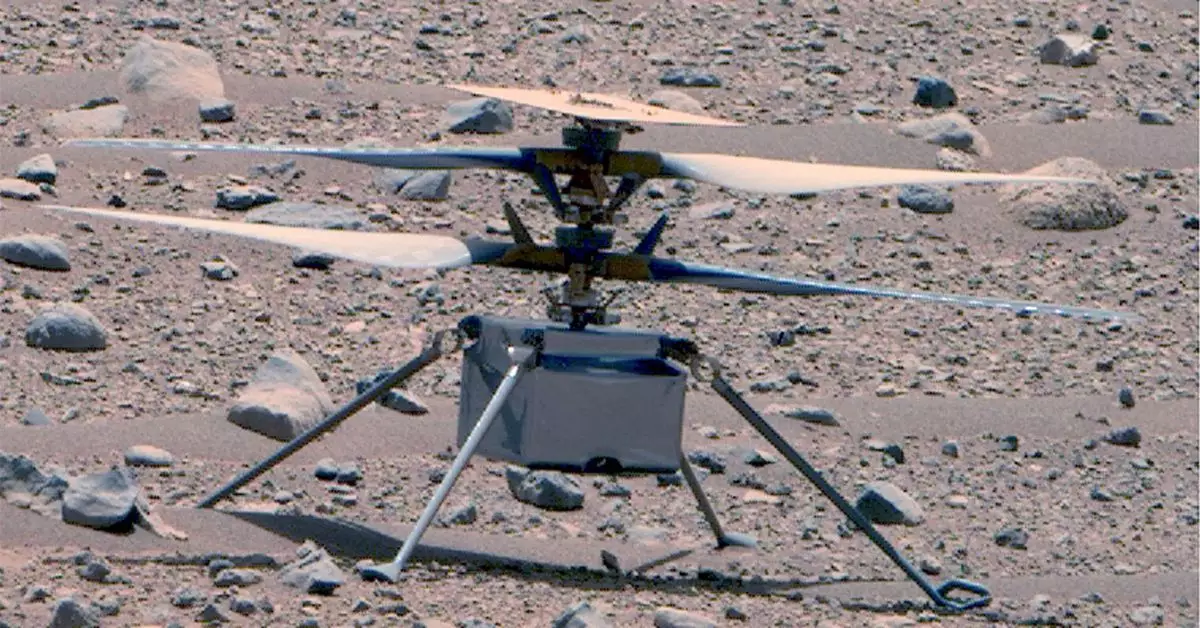Since its inception, NASA’s Ingenuity Mars Helicopter has captured the imagination of many, serving as a technological marvel in the realm of aerospace engineering. Designed initially for just a few test flights, Ingenuity has significantly exceeded expectations, demonstrating remarkable resilience and adaptability in the harsh Martian environment. However, its journey came to an unexpected end on January 18th, 2024, a date that analysts and engineers at NASA’s Jet Propulsion Laboratory (JPL) would reflect upon with mixed feelings of achievement and loss.
NASA’s engineers have pinpointed the cause of Ingenuity’s crash as a failure in its vision navigation system. This system, intended to rely on identifiable features on Mars’ surface for flight guidance, encountered a deceptive stretch of terrain devoid of distinctive textures. The resulting confusion in velocity estimates led to a hazardous descent, culminating in a crash landing that compromised the helicopter’s structural integrity.
Through meticulous analysis of data gathered post-crash, it became evident that high horizontal velocity contributed to the impact. The helicopter, intended to glide smoothly, faced an abrupt transition that caused a series of dynamic shifts. It is poignant to consider how, despite extensive pre-launch simulations, such uncharted elements could cause even the most advanced technology to falter.
Upon first assessments after the crash, it was suspected that contact with the Martian surface had physically damaged Ingenuity’s rotor blades. However, investigations revealed a more nuanced scenario: the rotor blades likely failed not from direct contact but from excessive loads imposed during the rapid attitude changes at impact. This finding emphasizes how critical minute details in engineering can lead to unforeseen complications in aerospace operations.
Search efforts revealed parts of the rotor blades up to 49 feet from the crash site, reinforcing the violent nature of the landing. This discovery not only signals the end of Ingenuity’s flights but also highlights the vulnerabilities inherent in rotorcraft technology operating in extraterrestrial atmospheres.
Despite being grounded, Ingenuity continues to contribute significantly to Mars exploration efforts. The reestablishment of communication less than 24 hours post-crash allows the craft to relay vital weather and avionics data back to the Perseverance rover. This ongoing communication serves as a valuable resource for engineers striving to design future vehicles capable of traversing the challenging Martian landscape.
Ingenuity’s extended mission, originally projected for a mere month, has accrued nearly three years of operational experience, underpinning crucial lessons that will inform the design of future aircraft intended for extraterrestrial environments. The data gathered thus far not only showcases the helicopter’s unprecedented capabilities but also emphasizes the importance of adaptability and continual learning in technological advancement.
The Ingenuity helicopter’s journey may have concluded with an abrupt end, but its legacy will undoubtedly shape future Mars missions. The insights gleaned from its experiences—and the lessons learned from its ultimate challenges—will indubitably inform the next generation of space exploration technology. As engineers analyze the facts surrounding the crash, they are likely to foster innovations that will enable future vehicles to better navigate the complexities of Martian terrain. Ingenuity’s tale is not just about success and failure; it is a testament to human perseverance and the relentless pursuit of knowledge in the face of adversity.

